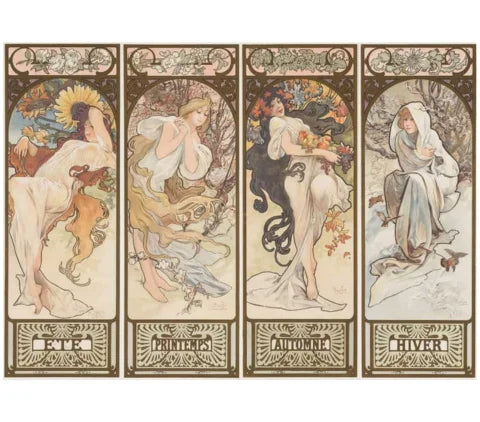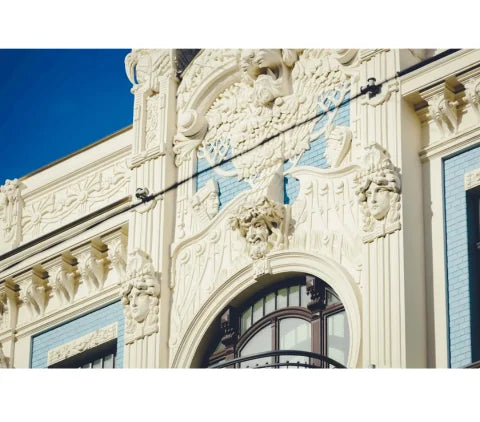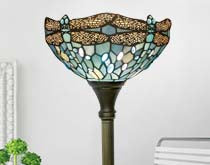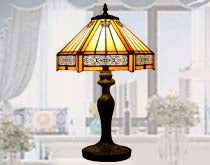Art Nouveau Furniture: Characteristics & Representations
In the rich history of art and design, Art Nouveau is like a bright pearl, its unique characteristics are unforgettable. Whether in painting, sculpture or architecture, it has left an indelible mark, especially in furniture design, where its influence is deeply felt. In this article, we'll take a closer look at the roots of Art Nouveau, what makes it unique and how it can be incorporated into furniture design.
Read other interesting blogs: Romantic and Unique Rose diamond table lamps
What is Art Nouveau?
Art Nouveau, sometimes referred to simply as Art Nouveau, is a style of art and design that gained popularity in Europe and North America between the late 19th and early 20th centuries. The name is taken from the French word, which translates as Art Nouveau. The style pursued a break with tradition and a sense of innovation and modernity, rather than simply copying old art forms.
Related reading: Tiffany Lamps: Art Deco or Art Nouveau

Characteristics
The main characteristics of the Art Nouveau style include:
1. Nature-inspired: Art Nouveau designs are often inspired by nature, especially plant and animal forms. These designs often feature graceful curves and symmetrical shapes.
2. Dynamic Lines: Another distinguishing feature of this style is its dynamic, flowing lines. These lines often mimic the forms of nature, such as vines, flowers, and other organic shapes.
3. Detailed Craftsmanship: Art Nouveau furniture and other works of art are often handmade with attention to detail and craftsmanship, demonstrating a high level of skill.
4. Use of new materials and techniques: Art Nouveau designers did not limit themselves to traditional materials and techniques; they also experimented with new materials and techniques, such as glass, ceramics, and new metal alloys.
This admiration for nature and challenge to tradition made Art Nouveau a truly modern art movement, and it laid the foundation for later design styles such as Art Deco and Modernism.
In the next section, we will further explore the use of Art Nouveau in furniture design, as well as the people who represented this style and their work.
Continuing our exploration of Art Nouveau furniture design, we can gain a deeper understanding of how this style has influenced the development of modern furniture design and how it still maintains its unique appeal in today's home spaces.

Representatives of outstanding figures
The rise and development of Art Nouveau could not have been achieved without a number of key designers and artists whose works and innovative ideas contributed greatly to the formation and popularization of the style.
1. Alphonse Mucha: As a representative of the Art Nouveau style, Mucha's work is known for its graceful curves, femininity, and floral designs. Many of his works, such as advertising posters and illustrations, demonstrate the core characteristics of the Art Nouveau style.
2. Louis Comfort Tiffany: Comfort was an American Art Nouveau icon, known for his stained glass artifacts and lamps, commonly known as Tiffany lamps. His designs incorporate a lot of natural elements such as flowers, vines, and butterflies.
3. Hector Guimard: A representative of the French Art Nouveau style, Guimard's architectural and furniture designs show the characteristics of this style. His most famous work is the design of the subway entrance in Paris, whose graceful curves and organic forms have become the symbol of Art Nouveau.
Art Nouveau Furniture
Art Nouveau furniture was a product of the art and design movement of the late 19th and early 20th centuries, reflecting the era's admiration for nature, elegance, and craftsmanship. This type of furniture was designed not only for utility but also for artistic expression and aesthetic pursuit.
Design
Art Nouveau furniture design is characterized by its unique forms and meticulous craftsmanship. Smooth curves, organic forms, and intricate decorations are its signature features. Designers were inspired by plants, animals, and other natural elements and incorporated them into the design of furniture to create pieces that were both functional and artistic.
- Smooth Curves: Art Nouveau furniture is often best characterized by its curves, which mimic forms found in nature, such as vines, flowers, and streams of water.
- Organic forms: furniture designs often mimic biological forms found in nature, such as flower petals, leaves, and animal figures.
- Intricate Decoration: These pieces of furniture often feature elaborate carvings, inlays, and colorful paintings that add both artistic and practical value to the furniture
Materials and Craftsmanship
Art Nouveau furniture designers were very particular about the choice of materials and the use of craftsmanship. Their choice of materials are usually hardwood, bronze, glass, and metal, these materials are not only strong and durable, but also can show the furniture of noble and artistic.
- Hardwoods: such as oak, walnut, and mahogany, these woods have a deep color and beautiful grain, which are very suitable for making furniture.
- Bronze and metal: these materials are often used for furniture decorations and accessories such as handles, hinges, and inlays.
- Glass: Art Nouveau furniture is often decorated with stained glass, which can be used both as a practical part, such as table tops, and as decoration, such as inlays.
Applications
Art Nouveau furniture was not just a utilitarian item, but a work of art. These pieces of furniture were often found in the luxurious homes, hotels, and other public places of the era. They not only provided a practical function to these places but also added an artistic atmosphere and nobility to them.
Conclusion
The Art Nouveau style, as a major art and design movement of the late 19th and early 20th centuries, had a profound impact on later generations. Known for its distinctive forms, exquisite craftsmanship, and admiration for nature, its furniture designs have become part of the history of art and design. Today, as we look back on the history and achievements of this style, we can gain a deeper understanding of the innovative ideas and pursuit of beauty behind it.























